From the Trenches
Neanderthal Brain Strain
By NIKHIL SWAMINATHAN
Monday, August 12, 2013
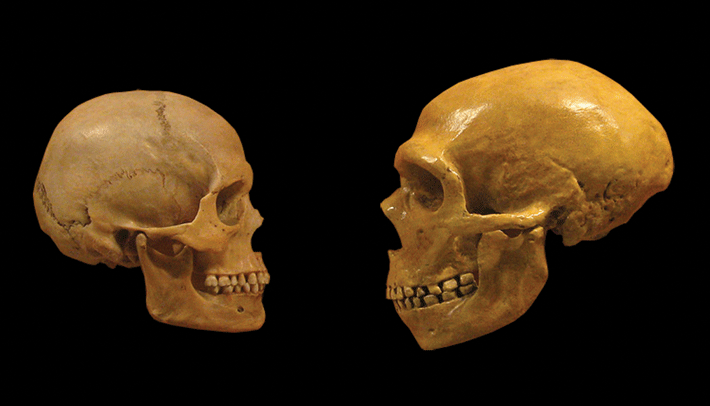 The brains of Neanderthals and ancient humans were remarkably close in volume—roughly 90 cubic inches. But that doesn’t mean they were the same.
The brains of Neanderthals and ancient humans were remarkably close in volume—roughly 90 cubic inches. But that doesn’t mean they were the same.
Scientists studied 32 human and 13 Neanderthal skulls, 27,000 to 75,000 years old, and found that Neanderthal eyes were, on average, 15 percent larger than those of humans. They attribute this to the Neanderthals’ European origin, where they would have had lower light levels than in Africa, where humans developed. Accordingly, the researchers estimate Neanderthal brains used twice the space for visual processing compared with human brains.
Improved sight was not without its costs—Neanderthals likely had less brain capacity to put toward social interaction. According to University of Oxford anthropology graduate student Eiluned Pearce, Neanderthals are believed to have lived in smaller groups and traveled shorter distances for resources compared to humans. “That suggests that although they interacted with neighboring bands,” she says, “they did not interact with more distant ones, or at least not as frequently as modern humans did.”
French Wine, Italian Vine
By NIKHIL SWAMINATHAN
Monday, August 12, 2013
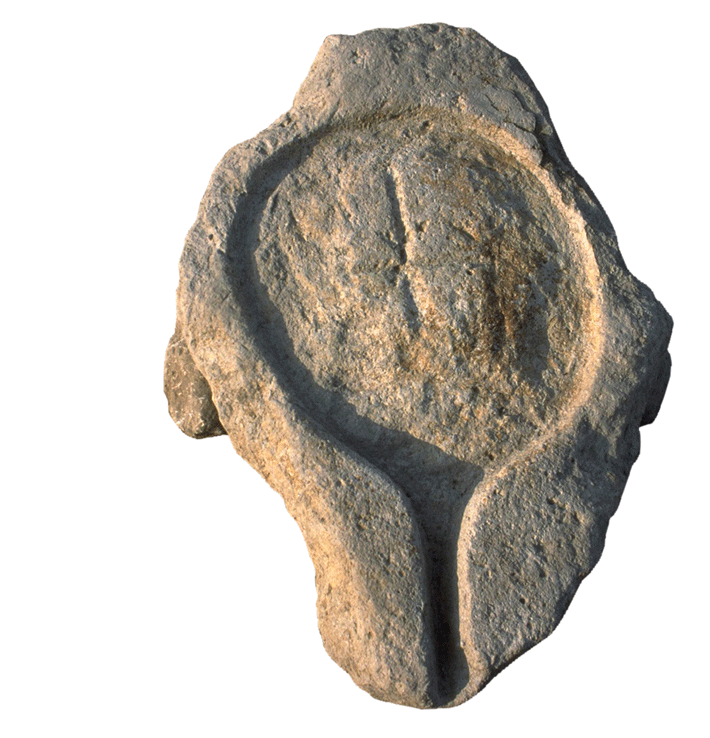 Chemical analysis of a limestone platform at Lattara, on the southern coast of France, indicates it was used for pressing grapes into wine. Dating to as early as 425 B.C., it is the first evidence of winemaking in the country. The platform bears traces of tartaric acid, the telltale compound associated with ancient Mediterranean grape wine. A nearby clay pot held the remains of thousands of grape seeds.
Chemical analysis of a limestone platform at Lattara, on the southern coast of France, indicates it was used for pressing grapes into wine. Dating to as early as 425 B.C., it is the first evidence of winemaking in the country. The platform bears traces of tartaric acid, the telltale compound associated with ancient Mediterranean grape wine. A nearby clay pot held the remains of thousands of grape seeds.
Archaeologists also uncovered several amphoras that contain residue of tartaric acid, but they are up to 100 years older than the press, suggesting that trade with northwest Italy spurred French winemaking.
“It’s not just some foreign people coming in and starting up winemaking,” says Patrick McGovern, a biomolecular archaeologist at the University of Pennsylvania Museum of Archaeology and Anthropology. “It’s the native Celtic people in France, the Gauls, who are involved.”
Spain's Lost Jewish History
By JARRETT A. LOBELL
Monday, August 12, 2013
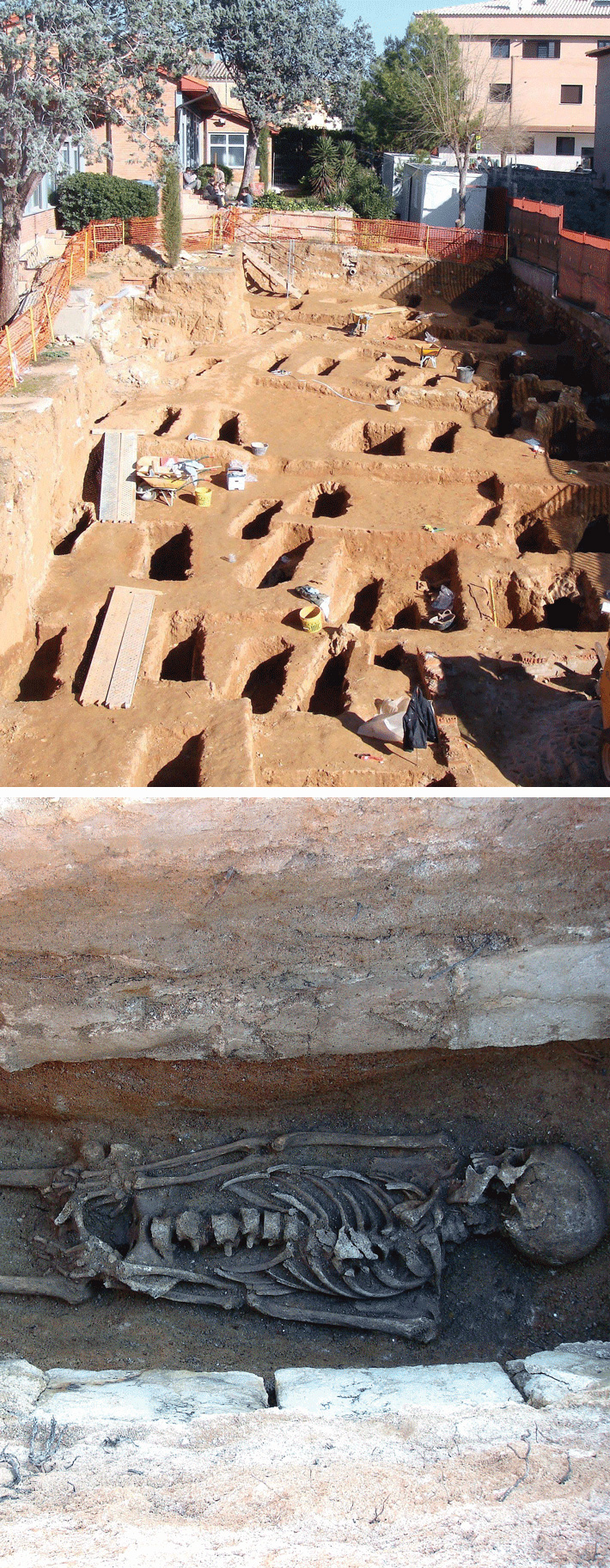 Though written sources identify the neighborhood of Cerro de la Horca as a medieval burial ground, it was not until 2008, when human bones were found in a local schoolyard, that excavations were undertaken at the site. After years of post-excavation study, archaeologist Arturo Ruiz Taboada has revealed that the area contained 107—and probably many more—mid-twelfth-century tombs. The tombs are of a type distinctive to Jewish burials, with no parallels among the city’s Muslim or Christian graves.
Though written sources identify the neighborhood of Cerro de la Horca as a medieval burial ground, it was not until 2008, when human bones were found in a local schoolyard, that excavations were undertaken at the site. After years of post-excavation study, archaeologist Arturo Ruiz Taboada has revealed that the area contained 107—and probably many more—mid-twelfth-century tombs. The tombs are of a type distinctive to Jewish burials, with no parallels among the city’s Muslim or Christian graves.
Following the expulsion of the Jews from Spain in 1492, there was a policy of eliminating every symbol or memory of their presence in the country. “It’s been difficult to uncover Jewish culture and tradition through archaeology,” says Ruiz Taboada, “and very little evidence of their rise during the twelfth and thirteenth centuries survives.” Although physical anthropologists were part of the excavation team, it wasn’t possible to study the remains after ultra-Orthodox groups demanded an end to work on the site and immediate reburial of the deceased.
Samson and the Gate of Gaza
By MALIN GRUNBERG BANYASZ
Monday, August 12, 2013
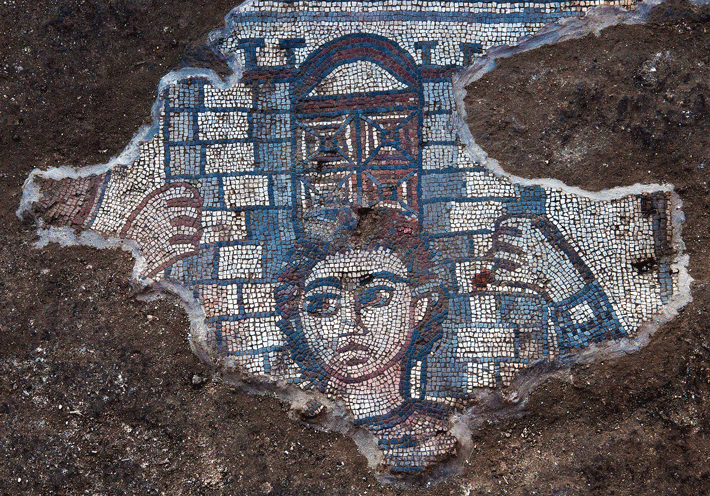
At the site of Huqoq, in Israel’s Galilee region, Jodi Magness of the University of North Carolina at Chapel Hill has discovered a mosaic depicting Samson. The fifth-century work shows him carrying the gate of Gaza on his shoulders—a scene from Judges 16:3. Another Samson mosaic was found there last year, suggesting the synagogue had been decorated with a pictorial cycle, the first of its kind uncovered in Israel.
Golden Sacrifices
By JARRETT A. LOBELL
Monday, August 12, 2013
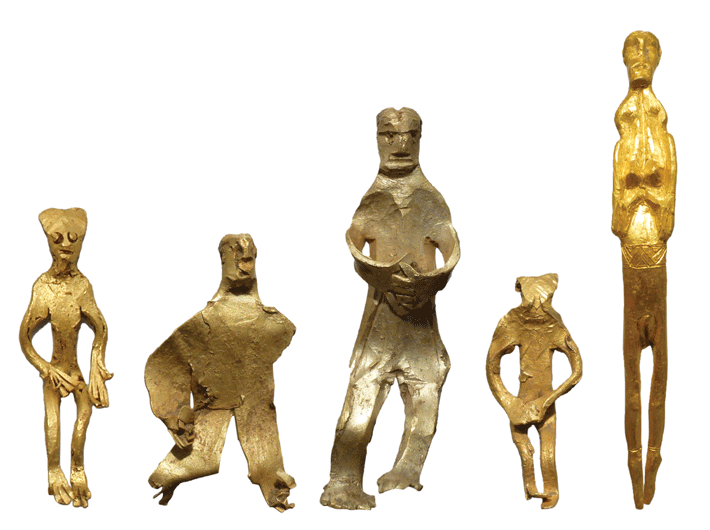
During the past four years, on the Danish island of Bornholm, archaeologists and amateurs have uncovered a collection of remarkable gold figurines dating from the sixth or seventh century A.D. According to Bornholm Museum archaeologist René Laursen, the figurines represent deities and were sacrificed with wishes for health, fertility, or a good harvest. “They are very unusual,” says Laursen. “Although we know of a few figurines from Scandinavia, they are usually bronze.” In addition to many silver, bronze, and iron artifacts, 24 gold foil figurines have also been uncovered at the site—called Smørenge, or “Butter Meadows”—probably all offerings at one or more sacred springs, or perhaps even a temple.
Advertisement
Advertisement
IN THIS ISSUE
From the Trenches
No Changeups on the Savannah
Off the Grid
The Last Flying Pencil
Small Skirmish in the War for Freedom
Sifting Through Molehills
City of Red Stone
Animal Offerings of the Aztecs
High-Definition Obsidian
Tomb of the Wari Queens
Golden Sacrifices
Spain's Lost Jewish History
Samson and the Gate of Gaza
French Wine, Italian Vine
Neanderthal Brain Strain
Advertisement

Recent Issues
-
 May/June 2024
May/June 2024
-
 March/April 2024
March/April 2024
-
 January/February 2024
January/February 2024
-
 November/December 2023
November/December 2023
-
 September/October 2023
September/October 2023
-
 July/August 2023
July/August 2023
-
 May/June 2023
May/June 2023
-
 March/April 2023
March/April 2023
-
 January/February 2023
January/February 2023
-
 November/December 2022
November/December 2022
-
 September/October 2022
September/October 2022
-
 July/August 2022
July/August 2022
-
 May/June 2022
May/June 2022
-
 March/April 2022
March/April 2022
-
 January/February 2022
January/February 2022
-
 November/December 2021
November/December 2021
-
 September/October 2021
September/October 2021
-
 July/August 2021
July/August 2021
-
 May/June 2021
May/June 2021
-
 March/April 2021
March/April 2021
-
 January/February 2021
January/February 2021
-
 November/December 2020
November/December 2020
-
 September/October 2020
September/October 2020
-
 July/August 2020
July/August 2020
-
 May/June 2020
May/June 2020
-
 March/April 2020
March/April 2020
-
 January/February 2020
January/February 2020
-
 November/December 2019
November/December 2019
-
 September/October 2019
September/October 2019
-
 July/August 2019
July/August 2019
-
 May/June 2019
May/June 2019
-
 March/April 2019
March/April 2019
-
 January/February 2019
January/February 2019
-
 November/December 2018
November/December 2018
-
 September/October 2018
September/October 2018
-
 July/August 2018
July/August 2018
-
 May/June 2018
May/June 2018
-
 March/April 2018
March/April 2018
-
 January/February 2018
January/February 2018
-
 November/December 2017
November/December 2017
-
 September/October 2017
September/October 2017
-
 July/August 2017
July/August 2017
-
 May/June 2017
May/June 2017
-
 March/April 2017
March/April 2017
-
 January/February 2017
January/February 2017
-
 November/December 2016
November/December 2016
-
 September/October 2016
September/October 2016
-
 July/August 2016
July/August 2016
-
 May/June 2016
May/June 2016
-
 March/April 2016
March/April 2016
-
 January/February 2016
January/February 2016
-
 November/December 2015
November/December 2015
-
 September/October 2015
September/October 2015
-
 July/August 2015
July/August 2015
-
 May/June 2015
May/June 2015
-
 March/April 2015
March/April 2015
-
 January/February 2015
January/February 2015
-
 November/December 2014
November/December 2014
-
 September/October 2014
September/October 2014
-
 July/August 2014
July/August 2014
-
 May/June 2014
May/June 2014
-
 March/April 2014
March/April 2014
-
 January/February 2014
January/February 2014
-
 November/December 2013
November/December 2013
-
 September/October 2013
September/October 2013
-
 July/August 2013
July/August 2013
-
 May/June 2013
May/June 2013
-
 March/April 2013
March/April 2013
-
 January/February 2013
January/February 2013
-
 November/December 2012
November/December 2012
-
 September/October 2012
September/October 2012
-
 July/August 2012
July/August 2012
-
 May/June 2012
May/June 2012
-
 March/April 2012
March/April 2012
-
 January/February 2012
January/February 2012
-
 November/December 2011
November/December 2011
-
 September/October 2011
September/October 2011
-
 July/August 2011
July/August 2011
-
 May/June 2011
May/June 2011
-
 March/April 2011
March/April 2011
-
 January/February 2011
January/February 2011
Advertisement






